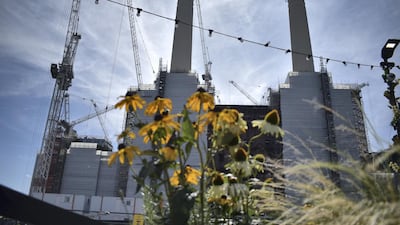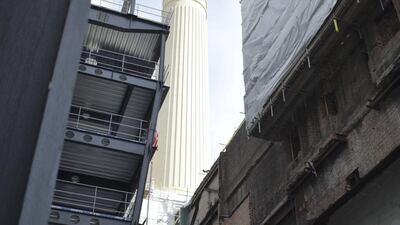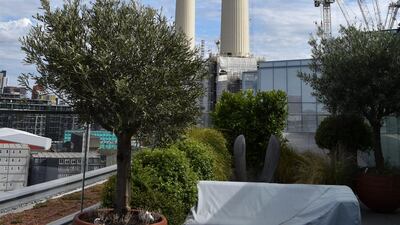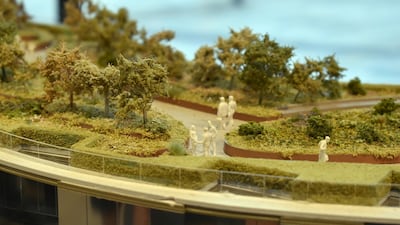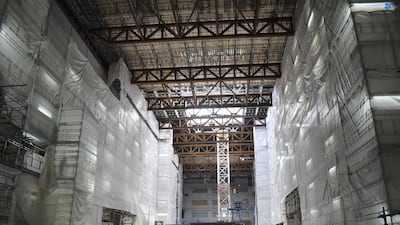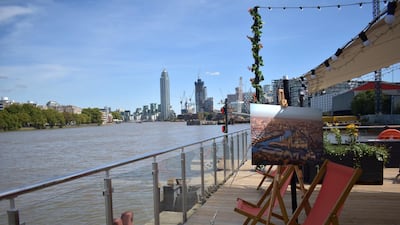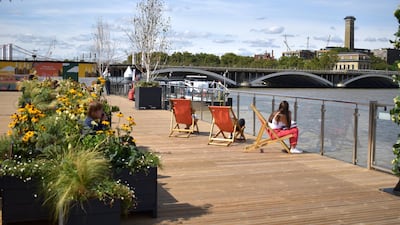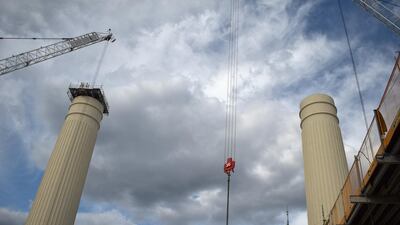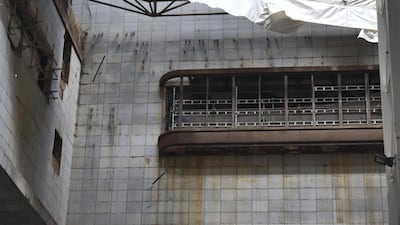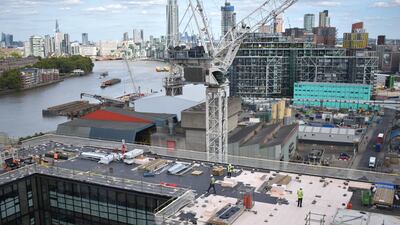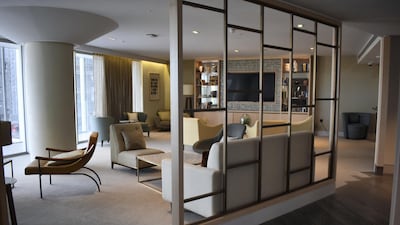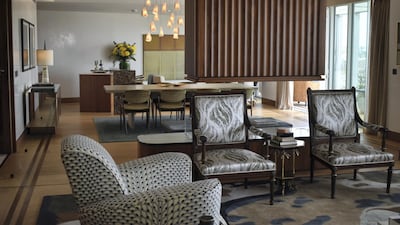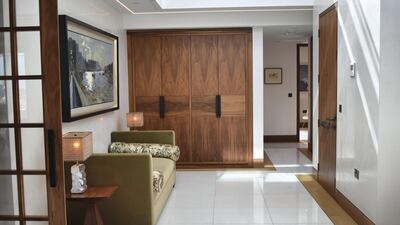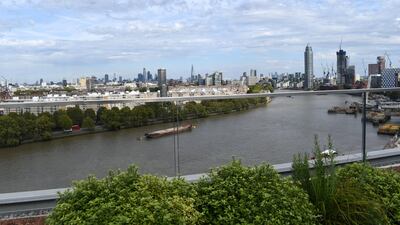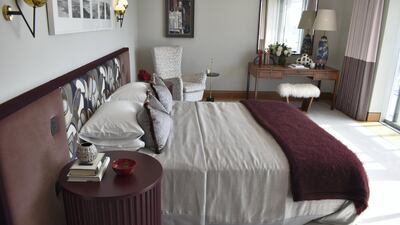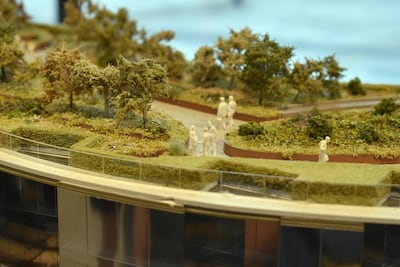London, much like the rest of the UK, changes and transforms with the seasons. In the summer, travellers from all over the world, and especially the Middle East, flock to the British capital, leaving behind the sweltering heat of their homelands. Some may head to upmarket Knightsbridge for a spot of shopping at Harrods or to Mayfair with its upmarket streets lined with grand terraced housing. But that could all be about to change with the development of Battersea Power Station, a sprawling 170,000-square-metre village, a stone's throw from the bright lights of Chelsea.
In 2021, the revamped site on the edge of the River Thames will open for the first time in more than 30 years. A relic of London's industrial past after it was closed in 1983, the power station is to be transformed into what could become an incredibly sought-after residential, office and leisure space all in one – offering a touch of Dubai or Singapore in the heart of London. It's a building so large that St Paul's Cathedral could fit inside without touching the sides. It's also about as famous as the Tate Modern, and once upon a time powered about a fifth of London, including the Houses of Parliament. Now, it's being turned into homes for people from across the globe, from Emiratis to Americans and Londoners.
Silence has since given way to a buzzing village with 1,000 residents already moved into apartments, independent retailers and stunning penthouses lined with Art Deco interiors inspired by the power station's 1930s-era style. And that's only phase one of a three-part construction journey that aims to bring life to the power station and the surrounding area.
Take a look inside one penthouse in the already-opened Circus West Village:
“We are not building on an existing community here,” explains Honor Fishburn, director of placemaking at Battersea Power Station Development Company, who is responsible for keeping the area’s heritage alive. “We are building on a completely empty industrial wasteland. No one’s ever lived here, only a handful of people have worked here, so we’ve got to turn this into a place where people live, work and play, and come back again and again.”
And return they may well do. London authorities have already tunnelled a brand-new underground station, the first to be built in more than a quarter of a century, which is set to open within the next two years. Seafood festivals, independent cinemas and riverside restaurants are already bringing life to the former industrial estate.
History seeps into every nook and cranny. The power station has two turbine halls that will be converted into retail spaces offering premium brands not found on the high street. Italian marble tiles and beautiful Art Deco interiors will adorn the hall that was built in the 1930s. The other hall, which was added in 1950, will be made to look more austere, while also having a distinct personality, we're told.
Every brick laid tells a story. Switch dials are kept alive and reused in living quarters, and a so-called "Heritage '33" palette takes inspiration from the power station's control rooms. Elsewhere, sharp, clean lines from the turbine hall give the apartments a contemporary feel but with a nod to the past.
Top-end premium studio flats valued at £510,000 (Dh2.3 million) come with 1930s brass taps, cool-green tiles and furnishings that wouldn't look out of place if the cast of Downton Abbey showed up there in period dress. Rich mahogany wood lines a kitchen table and there's even a Middle Eastern majlis-style "inner courtyard" fit for hosting family events. All of this overlooks London's bending river through a balcony-conservatory fit both for Britain's colder winter nights and warmer summer days. Apartments at the top of the building will also have access to a residential rooftop garden that's within touching distance of the famed chimneys, faithfully recreated using decades-old manufacturing methods.
The architects behind this mammoth task include Foster + Partners, a firm that's also responsible for the UAE's Mobility Pavilion at Expo 2020 Dubai, Berlin's Reichstag and the restoration work of Oxford's Bodleian Library. "The power station is not a traditional restoration project," Andy Bow, the firm's deputy head of studio and senior partner, tells The National. "Effectively, it was a derelict project. Some walls had collapsed.
"It's important people understand that what we're trying to do is more fundamental than a restoration project. The power station is the anchor for the new development around it."
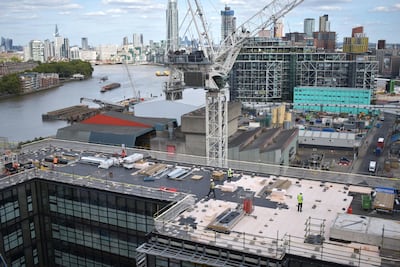
But could all this be a place for Emiratis and residents from overseas to live, work and play? Yes, says Andrew Jones, BPSDC's director of special projects. "What people, especially from the Gulf and beyond, like is that feeling of being safe and secure, but it's not overbearing," he says.
By that, he means it will not be a gated community cut off from London's dynamism. It's a hub in its own right, slap bang in Zone One, with riverboat connections to the city heading east. An analogy to Downtown Dubai is thrown about, but isn't Battersea Power Station village closer in vision to Dubai Marina?
"Dubai Marina is a more residential zone," says Jones. "But here, its 50-50. We've got office space and as a result it's more inclusive, just like any London village … [but] this is a new London village."
Battersea won't be "prescriptive" to tastes based on second-guessing who lives there, Jones says. "There will be elements of Shoreditch, and Marylebone High Street. But this is unique."
This is where would-be residents will rub shoulders with tech workers streaming in and out of Apple's London hub, which is still under construction, but the tech company will occupy the top floors of the Power Station. Jones says the properties will appeal to everyone, from Emirati families to British entrepreneurs. "This is a broad church" of singles, couples and families, he says.
The property developers have kept open spaces for community use. A smartphone app connects residents together, whether they fancy setting up a book club meeting or dog-sitting for people from the other side of the village. Should you prefer peace and quiet, that, too, is on offer in the elegant surroundings.
Jones says that one Emirati resident loved his Battersea apartment so much that he flew his mother to London simply so she could see it and enjoy the architectural space that is only a five-minute walk from Battersea Park. It's an ideal place for families and, after all, the joy of London is that it is a city for walkers.
The question on everyone's lips, though, is can Battersea Power Station retain a community feel and be a place to live, as opposed to yet another investment opportunity? The answer to that lies in the mistakes London has already made, with Battersea developers citing Canary Wharf and East End developers in post-Olympic Games Stratford as examples. In those places every metre of space is taken up as residential space to fill, they are often soulless on a weekend and little consideration was seemingly given to fostering long-term, community living.
Thankfully, the Battersea vision is already paying off. It has been so popular among those buying into phase one that housing has already opened in the surrounding area, and repeat purchases have been made as high as £1.7m for two-bedroom apartments in the historic building.
"They've seen what they've seen and they like it," says Jones, who says he often meets buyers from the Middle East. "It suits their work-life balance, which is everything people are trying to address in a work-to-live rather than a live-to-work approach. It's what we are trying to do. The utopia is a family-orientated approach here in Battersea".
In 10 to 15 years, he says, "it'll be the most extraordinary place like no other".
